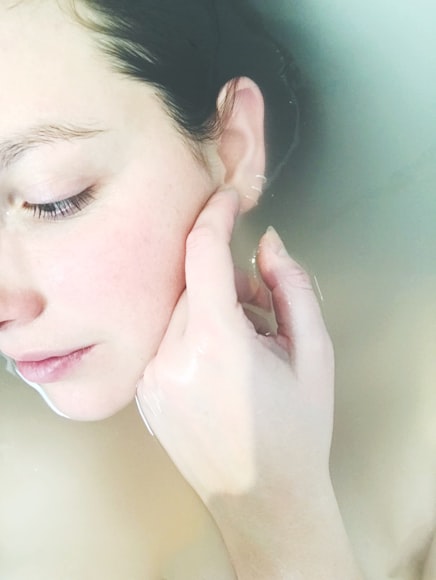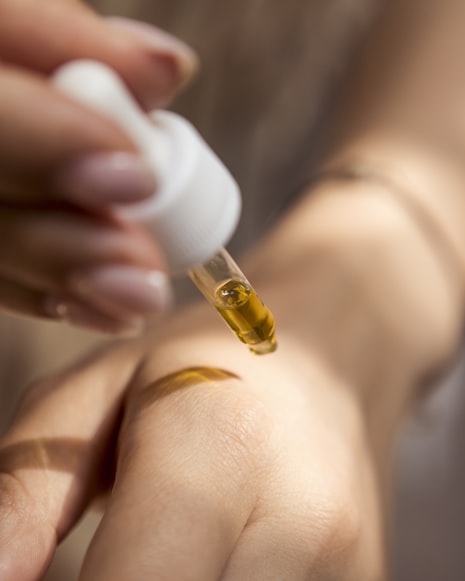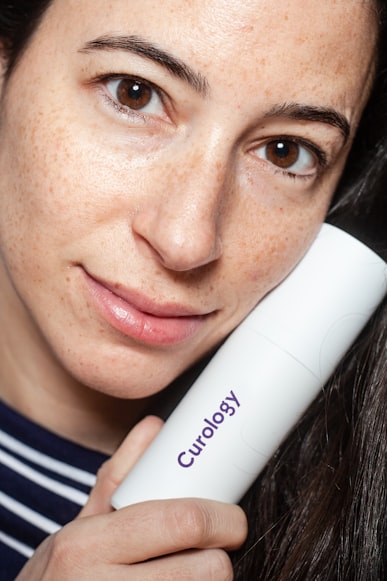Pitbull Skin Conditions: An Outline

Pitbulls are a popular and beloved dog breed known for their affectionate nature, loyalty, and athleticism. However, like all breeds, Pitbulls are prone to certain skin conditions. Understanding these conditions and their symptoms is essential for dog owners to provide appropriate care and maintain their pet’s health.
Common Pitbull Skin Conditions
1. Demodectic Mange
Demodectic mange is a skin condition caused by an overgrowth of Demodex mites, which are normally present on dogs in small numbers. In certain circumstances, such as immune system deficiencies or stress, these mites can proliferate and cause skin inflammation and hair loss.
Symptoms:
- Hair loss, especially around the face, eyes, and legs
- Scaling and redness
- Itching
2. Sarcoptic Mange
Sarcoptic mange, also known as scabies, is another type of mite infestation that causes severe itching and skin irritation. It is highly contagious and can be transmitted from other infected animals or contaminated surfaces.
Symptoms:
- Intense itching
- Red, crusty skin
- Hair loss
- Secondary skin infections
3. Malassezia Dermatitis
Malassezia dermatitis is a skin condition caused by an overgrowth of Malassezia yeast, which is a normal inhabitant of the skin microbiome. Factors such as allergies, immune system dysfunction, or hormonal imbalances can disrupt the balance and lead to skin inflammation.
Symptoms:
- Itching
- Red, greasy skin
- Musty odor
- Scaly patches
4. Food Allergies
Food allergies are a common cause of skin problems in Pitbulls. Proteins in certain foods, such as chicken, beef, or wheat, can trigger an allergic reaction that manifests in skin irritation.
Symptoms:
- Itching
- Hives
- Diarrhea
- Swollen eyes or face
5. Atopy (Environmental Allergies)
Atopy is a type of allergic dermatitis caused by environmental allergens such as pollens, dust mites, or mold. Pitbulls with atopy experience chronic itching and skin inflammation.
Symptoms:
- Itching
- Red, irritated skin
- Recurrent ear infections
- Hyperactivity
Management and Treatment
Treating Pitbull skin conditions requires addressing the underlying cause. Dermatological examinations, blood tests, skin scrapings, and biopsies may be necessary for accurate diagnosis.
- Mite infestations: Topical or oral medications can be prescribed to kill the mites and relieve skin irritation.
- Malassezia dermatitis: Anti-fungal shampoos and topical treatments are used to control the yeast overgrowth.
- Food allergies: Elimination diets can help identify the specific allergens that trigger the reaction.
- Environmental allergies: Avoidance of allergens and the use of antihistamines or immunotherapy can help manage the symptoms.
Regular grooming, including bathing with hypoallergenic shampoos, can help keep the skin clean and reduce the risk of infection. Additionally, providing a balanced diet, maintaining a healthy weight, and managing stress can support the immune system and reduce the occurrence of skin conditions.
Conclusion
Pitbulls are susceptible to various skin conditions that can cause significant discomfort and affect their quality of life. Understanding the symptoms of these conditions and seeking prompt veterinary care is crucial for effective management and treatment. By addressing the underlying cause and implementing appropriate care measures, Pitbull owners can help their beloved pets maintain healthy and vibrant skin.
Common Skin Issues in Pitbulls:

Pitbulls are beloved companions known for their loyalty, athleticism, and striking appearance. However, like all breeds, they are prone to certain health issues, including skin problems. Understanding these common skin conditions can help pet owners identify, prevent, and treat them effectively.
1. Dermatitis
Dermatitis refers to an inflammation of the skin. In pitbulls, it can manifest in various forms:
- Contact dermatitis: Occurs when the skin comes into contact with an irritant, such as pollen, grass, or cleaning products.
- Allergic dermatitis: Caused by an allergic reaction to a specific allergen, such as food or fleas.
- Atopic dermatitis (atopic eczema): A chronic, itchy skin condition caused by a combination of genetic and environmental factors.
Symptoms of dermatitis include excessive scratching, redness, hair loss, and crusty or thickened skin. Treatment typically involves identifying and eliminating the underlying cause, using antihistamines, corticosteroids, or antibiotics as needed.
2. Folliculitis
Folliculitis is an inflammation of the hair follicles, caused by a variety of factors such as:
- Bacterial infection: Staphylococcus or Malassezia species are common culprits.
- Allergic reactions: Folliculitis can develop as a secondary effect of allergic dermatitis.
- Autoimmune disorders: Certain immune system dysfunctions can trigger folliculitis.
Symptoms of folliculitis include small, raised, red bumps on the skin, accompanied by itching, pain, and hair loss in severe cases. Treatment involves addressing the underlying cause, using antibiotics, anti-inflammatory medications, or antifungal shampoos as appropriate.
3. Yeast Infections
Yeast infections are common skin problems in pitbulls caused by an overgrowth of Malassezia pachydermatis, a type of yeast that normally lives on the skin in small numbers. Factors such as warm, humid environments, allergies, and hormonal imbalances can disrupt the skin’s natural balance and allow yeast to proliferate.
Symptoms of yeast infections include:
- Itching and redness: Yeast infections cause intense itching, often leading to skin damage from scratching.
- Greasy, scaly skin: The overgrowth of yeast can produce a thick, greasy layer of scales on the skin.
- Musty odor: Yeast infections have a distinctive musty or “corn chip” smell.
Treatment for yeast infections involves using antifungal medications, both topically and orally. Baths with medicated shampoos, dietary changes, and addressing any underlying allergies can also help control the infection.
Prevention and Care Tips
Preventing skin issues in pitbulls requires a combination of proactive measures and proper care:
- Regular grooming: Bathing and brushing your pitbull regularly helps remove allergens and excess oils that can contribute to skin problems.
- Immune system support: Provide a healthy diet and ensure your pitbull receives regular vaccinations to boost their immune system.
- Avoidance of allergens: Identify and minimize exposure to allergens that trigger allergies or dermatitis.
- Environmental hygiene: Keep your pitbull’s living area clean, dry, and free of potential irritants.
- Regular veterinary checkups: Schedule regular veterinary exams to detect and address skin issues early on.
By understanding the common skin conditions that affect pitbulls, pet owners can take proactive steps to prevent, identify, and treat these problems effectively, ensuring the health and well-being of their beloved companions.
Causes of Skin Problems:

Pitbulls are known for their muscular build and friendly disposition, but they can also be prone to certain skin conditions. Understanding the causes of these issues can help pet owners provide their Pitbulls with proper care and treatment.
Causes of Skin Problems in Pitbulls
Skin problems in Pitbulls can be caused by a variety of factors, including:
1. Allergies
Pitbulls are commonly allergic to substances in their environment, such as:
- Food allergens (e.g., beef, chicken, dairy)
- Environmental allergens (e.g., pollen, dust mites)
- Contact allergens (e.g., shampoos, detergents, flea collars)
2. Parasites
Parasites such as fleas, ticks, and mites can burrow into the skin, causing irritation, inflammation, and secondary infections.
3. Bacterial or Yeast Overgrowth
Bacteria and yeast can overgrow on the skin, especially in areas where the skin is folded or moist. This can lead to skin infections, such as:
- Bacterial folliculitis (infection of the hair follicles)
- Malassezia dermatitis (yeast infection)
Symptoms of Skin Problems
Pitbulls with skin problems may exhibit the following symptoms:
- Itching and scratching
- Redness and inflammation
- Hair loss
- Scabbed or crusty skin
- Open sores or blisters
- Discharge from the skin
- Licking or chewing at the affected area
Diagnosis and Treatment
Diagnosing the cause of skin problems in Pitbulls requires a thorough examination by a veterinarian. The veterinarian may perform tests such as:
- Skin scraping or biopsy to identify parasites or infections
- Allergy testing to determine specific allergens
- Blood tests to rule out underlying medical conditions
Treatment for skin problems in Pitbulls depends on the underlying cause. It may include:
- Medications to control itching or inflammation
- Antiparasitic treatments to kill parasites
- Antibiotics or antifungals to treat bacterial or yeast infections
- Hypoallergenic diets to eliminate food allergies
- Environmental management to reduce exposure to allergens
Prevention
Preventing skin problems in Pitbulls focuses on controlling potential triggers. Here are some tips:
- Feed a high-quality, hypoallergenic diet and avoid known allergens.
- Keep your Pitbull’s environment clean and free of allergens.
- Use gentle shampoos and conditioners specifically designed for dogs.
- Prevent parasites by using monthly flea and tick treatments.
- Regular grooming can help distribute natural skin oils and remove potential irritants.
Conclusion
Skin problems in Pitbulls can be caused by various factors, including allergies, parasites, and bacterial or yeast overgrowth. Understanding the causes and symptoms of these conditions enables pet owners to seek appropriate veterinary care and implement preventive measures to ensure their Pitbulls maintain healthy and comfortable skin.
Symptoms of Skin Conditions:

Pitbulls, renowned for their loyalty and athleticism, are prone to various health concerns, including skin conditions. Understanding the symptoms and causes of these issues is crucial for pet owners to ensure their pitbull’s well-being. This article will delve into the most prevalent pitbull skin issues, providing guidance on identifying, diagnosing, and managing these conditions.
Understanding the Pitbull’s Skin
Pitbulls possess a short, dense coat that can conceal skin problems. Their skin is typically healthy, but factors such as genetics, environmental factors, and allergies can contribute to the development of skin conditions.
Common Symptoms of Pitbull Skin Issues
Recognizing the symptoms of pitbull skin issues is essential for prompt diagnosis and treatment. Some of the most common signs include:
- Redness: Inflammation or irritation of the skin causes redness.
- Itching: Intense itching, also known as pruritus, is a hallmark of many skin conditions.
- Pustules or scabs: Small collections of pus or dried crusts on the skin can indicate infection or trauma.
- Hair loss: Localized or generalized hair loss can occur due to skin inflammation or underlying diseases.
Causes of Pitbull Skin Issues
Numerous factors can contribute to pitbull skin problems, including:
- Allergies: Environmental allergens such as pollen, dust mites, and food ingredients can trigger allergic reactions, leading to skin inflammation and itching.
- Parasites: External parasites like fleas, ticks, and mites can irritate the skin and cause allergic reactions.
- Bacterial infections: Skin infections caused by bacteria, such as Staphylococcus or Streptococcus, can lead to redness, pustules, and hair loss.
- Fungal infections: Yeast or ringworm infections can cause itching, hair loss, and skin lesions.
- Immune disorders: Conditions like pemphigus and lupus can disrupt the immune system, resulting in autoimmune disorders that affect the skin.
- Hormonal imbalances: Hormonal conditions, such as hypothyroidism or Cushing’s disease, can cause skin dryness, hair loss, and pigmentation changes.
Diagnosing Pitbull Skin Issues
Diagnosing pitbull skin issues requires a thorough physical examination by a veterinarian. The veterinarian will assess the skin, take a detailed history of the dog’s symptoms and lifestyle, and may perform tests such as:
- Skin scrapings: To check for parasites or fungal infections.
- Blood tests: To evaluate overall health and rule out underlying diseases.
- Skin biopsies: To obtain a sample of the skin for further analysis.
Treatment Options for Pitbull Skin Issues
Treating pitbull skin issues depends on the underlying cause and severity of the condition. Common treatments include:
- Antibiotics: For bacterial infections.
- Antifungals: For fungal infections.
- Antihistamines: To reduce allergic reactions.
- Corticosteroids: To suppress inflammation.
- Shampoos and conditioners: To soothe irritated skin and remove allergens.
- Immunosuppressive drugs: For immune disorders.
Preventing Pitbull Skin Issues
While not all skin issues can be prevented, certain measures can help reduce the risk of their development:
- Regular bathing: Keep the dog’s coat clean and free of allergens.
- Parasite prevention: Use effective flea and tick control products.
- Allergy management: Identify and avoid potential allergens.
- Skin care: Use gentle shampoos and conditioners formulated for pet skin.
- Nutritional support: Provide a balanced diet that supports healthy skin.
Conclusion
Pitbull skin issues are common concerns for pet owners. By understanding the symptoms, causes, and treatment options, you can ensure your pitbull receives prompt and appropriate care. Regular veterinary checkups and preventive measures are crucial for maintaining your dog’s healthy skin and overall well-being. Remember, skin problems can be a sign of underlying health issues, so seeking professional advice is essential for accurate diagnosis and effective management.
Diagnosis of Skin Problems:

Pitbulls are known for their muscular appearance and affectionate nature. However, they are also prone to various health issues, including skin problems. Identifying and treating skin conditions accurately can significantly improve their quality of life.
Types of Skin Problems in Pitbulls
Pitbulls commonly experience several skin conditions, such as:
- Allergies
- Bacterial infections (e.g., pyoderma)
- Fungal infections (e.g., ringworm)
- Parasitic infestations (e.g., mites, fleas)
- Demodectic mange
- Seborrhea
- Hot spots
Diagnosis of Skin Problems
Diagnosing skin problems in pitbulls requires a thorough approach that involves several steps:
1. Physical Examination
The initial step is a comprehensive physical examination. The veterinarian will inspect the dog’s skin for any lesions, redness, crusting, or discharge. They will also examine the ears, mouth, and feet for any abnormalities.
2. Skin Scraping
Skin scrapings are a common diagnostic tool used to identify parasites, such as mites or scabies. The veterinarian gently scrapes a small area of the skin and examines the collected sample under a microscope.
3. Allergy Testing
If allergies are suspected, allergy testing may be necessary to determine the specific allergens triggering the skin reaction. This typically involves intradermal skin testing or blood allergy panels.
Treatment Options for Skin Problems
Once the underlying skin condition is diagnosed, the veterinarian will recommend an appropriate treatment plan, which may include:
- Antibiotics: For bacterial infections
- Antifungals: For fungal infections
- Antiparasitics: For parasitic infestations
- Shampoos and conditioners: To soothe irritated skin and remove allergens
- Medications: To reduce inflammation or treat allergies
- Dietary modifications: In cases of food allergies
Prevention of Skin Problems
While not all skin problems can be prevented, several measures can help reduce the risk:
- Regular bathing and grooming: Remove loose hair, dirt, and allergens.
- Control parasites: Use flea and tick prevention products regularly.
- Feed a high-quality diet: Provide your dog with a balanced diet free from potential allergens.
- Avoid exposure to irritants: Keep your dog away from substances that could cause skin reactions.
- Regular veterinary checkups: Have your dog examined by a veterinarian annually to identify any potential skin issues early on.
Conclusion
Skin problems are common in pitbulls and can cause significant discomfort and distress. Accurate diagnosis and timely treatment are essential to alleviate symptoms and improve the dog’s overall health. By understanding the various diagnostic methods and treatment options available, dog owners can effectively manage their pitbull’s skin health and ensure their well-being.
Treatment Options:
Pitbulls, known for their robust physique and loyal nature, can sometimes face skin problems. Understanding the causes and treatment options for these issues is essential for ensuring the well-being of these beloved companions.
Common Causes of Pitbull Skin Issues:
-
Allergies: Pitbulls can be prone to allergic reactions, triggered by environmental factors such as pollen, dust, and certain foods. Allergies can manifest in various skin problems, including itching, redness, and skin infections.
-
Parasites: Fleas, ticks, and mites can infest dogs, causing intense itching, skin irritation, and even hair loss.
-
Bacterial Infections: Skin infections caused by bacteria, such as Staphylococcus, can lead to redness, swelling, scabbing, and pus discharge.
-
Fungal Infections: Malassezia, a type of yeast, can cause skin infections characterized by itching, redness, and a musty odor.
-
Skin Fold Dermatitis: Pitbulls with deep skin folds can develop this condition, which occurs when moisture and bacteria accumulate in the folds, leading to infection.
-
Seborrhea: A skin condition that causes excessive oil production, resulting in greasy, flaky skin.
Treatment Options:
-
Antihistamines: For Pitbulls suffering from allergies, antihistamines can be prescribed to reduce itching and histamine release.
-
Antibiotics: Bacterial skin infections require antibiotics to clear the infection. Choice of antibiotics depends on the type of bacteria involved.
-
Antifungals: Malassezia infections respond to antifungal medications, which can be given orally or applied topically.
-
Medicated Shampoos and Conditioners: Antibacterial, antifungal, or hypoallergenic shampoos and conditioners can help soothe itching, reduce inflammation, and remove allergens.
-
Topical Ointments: Ointments containing corticosteroids or antimicrobial agents can be applied directly to the affected skin to reduce inflammation and kill bacteria.
-
Immunotherapy: In cases of severe allergies, immunotherapy may be considered. This involves gradually exposing the dog to the allergen to build up tolerance.
-
Skin Fold Cleaning: Regular cleaning of skin folds with a mild antiseptic solution can prevent skin fold dermatitis.
-
Dietary Modification: For dogs with food allergies, eliminating the allergen from the diet can alleviate skin symptoms.
-
Environmental Control: Minimizing exposure to potential allergens, such as pollen or dust mites, can help reduce allergy-related skin issues.
-
Hydrotherapy: Controlled bathing in warm water can help soothe irritated skin.
Prevention:
While not all skin issues can be prevented, there are steps you can take to minimize the risk:
- Keep your Pitbull regularly bathed and groomed.
- Control fleas, ticks, and mites with effective medications.
- Provide a nutritious diet that is free of known allergens.
- Minimize exposure to environmental allergens.
- Inspect your dog’s skin regularly for any signs of irritation or infection.
By understanding the common causes and effective treatment options for skin issues in Pitbulls, you can ensure that your furry friend enjoys a healthy and comfortable life. If your Pitbull exhibits any skin problems, it is crucial to consult with a veterinarian promptly for an accurate diagnosis and appropriate treatment plan.
Preventing Skin Issues:
Pitbulls, known for their muscular build and playful personalities, are susceptible to a range of skin conditions that can cause discomfort and affect their overall health. Understanding the causes of these skin issues and implementing preventive measures is crucial to maintaining the well-being of your furry friend.
Common Skin Issues in Pitbulls
Pitbulls are prone to several common skin conditions, including:
- Allergies: Environmental allergens, such as pollen or dust mites, can trigger allergic reactions in Pitbulls, leading to itching, hives, and inflammation.
- Atopic dermatitis: This chronic skin condition results from an overactive immune system, causing intense itching and inflammation.
- Bacterial infections: Pitbulls have a dense coat that can trap bacteria, leading to infections like hot spots or pyoderma.
- Yeast infections: Moisture buildup in skin folds or under the tail can promote yeast growth, resulting in itching and skin discoloration.
- Ringworm: A fungal infection that causes circular lesions on the skin, often accompanied by itching and hair loss.
Preventive Measures
Preventing skin issues in Pitbulls involves a combination of regular care and addressing potential triggers. Here are some essential preventive measures:
1. Regular Bathing:
Regular bathing is crucial for removing allergens, dirt, and bacteria from the skin. Use a mild, hypoallergenic shampoo specifically designed for dogs. Overbathing can dry out the skin, so it’s recommended to bathe your Pitbull once or twice a month, or more frequently if necessary.
2. Flea and Tick Control:
Fleas and ticks not only cause discomfort but can also transmit diseases. Regularly treat your Pitbull with flea and tick preventatives to keep these pests at bay. Choose products that are safe and effective for dogs of all ages.
3. Balanced Diet:
A nutritious diet plays a vital role in maintaining skin health. Feed your Pitbull a balanced diet high in protein, essential fatty acids, and vitamins. Avoid feeding table scraps or processed foods, as they can irritate the digestive system and contribute to skin issues.
4. Environmental Control:
If your Pitbull has allergies, identifying and minimizing exposure to specific allergens can help reduce skin irritation. Use air purifiers, keep windows closed during high pollen seasons, and avoid exposing your dog to areas where they encounter known allergens.
5. Regular Grooming:
Regular brushing helps remove loose hair and distribute natural oils, keeping the skin clean and healthy. Brush your Pitbull’s coat a few times a week to prevent matting and remove any potential irritants.
6. Skin Fold Hygiene:
Pitbulls have skin folds, particularly around the face and neck, which require special attention. Clean these skin folds gently with a damp cloth to prevent moisture buildup and yeast infections.
7. Regular Vet Check-ups:
Regular veterinary check-ups are essential for detecting and treating skin issues early on. Your veterinarian can diagnose skin conditions, prescribe appropriate medications, and advise on preventive care measures.
Conclusion
Preventing skin issues in Pitbulls requires a comprehensive approach that includes regular care, addressing triggers, and providing a healthy and comfortable environment. By following these preventive measures, you can help your beloved Pitbull maintain healthy skin and enjoy a long and happy life. Remember to consult with your veterinarian for personalized advice and prompt treatment if any skin issues arise.
Home Remedies for Mild Skin Problems:
As a loving dog owner, the health and well-being of your beloved pitbull is paramount. Skin problems are a common concern for this breed, and while some require professional veterinary attention, there are instances where home remedies can alleviate mild skin irritations. Here are a few effective home remedies to consider:
1. Oatmeal Baths
Oatmeal possesses soothing and anti-inflammatory properties that can effectively alleviate skin discomfort. To prepare an oatmeal bath for your pitbull, follow these steps:
- Grind 1 cup of rolled oats into a fine powder.
- Add the powdered oats to a warm bath.
- Allow your dog to soak in the oatmeal bath for 10-15 minutes.
- Rinse your dog thoroughly with clean water and pat dry.
Repeat this process 2-3 times per week until the skin irritation subsides.
2. Apple Cider Vinegar
Apple cider vinegar has antibacterial and antifungal properties that can help combat skin infections and relieve irritation. To use apple cider vinegar for your pitbull’s skin:
- Dilute apple cider vinegar with an equal amount of water.
- Apply the diluted apple cider vinegar to the affected area using a cotton ball or soft cloth.
- Allow the solution to sit on the skin for 10-15 minutes before rinsing with clean water.
Repeat this process 1-2 times per day until the skin irritation improves.
Additional Tips for Managing Mild Skin Problems
In addition to the home remedies mentioned above, there are several other steps you can take to help manage mild skin problems in your pitbull:
- Maintain a Healthy Diet: A balanced diet provides essential nutrients for healthy skin. Avoid feeding your dog foods that contain fillers, additives, or artificial ingredients.
- Regular Grooming: Regular brushing helps remove dead skin cells, dirt, and debris that can clog pores and lead to skin irritation.
- Avoid Overbathing: While bathing is important for maintaining hygiene, overbathing can strip the skin of its natural oils and lead to dryness and irritation.
- Use Hypoallergenic Shampoo: Gentle, hypoallergenic shampoos are less likely to irritate your pitbull’s skin.
- Protect from Allergies: Some pitbulls are prone to allergies that can trigger skin problems. Identify potential allergens and take steps to avoid them.
- Provide a Comfortable Environment: Keep your dog’s bedding and surroundings clean and free from irritants.
When to Seek Veterinary Attention
While home remedies can help alleviate mild skin problems, it’s important to seek veterinary attention if the irritation persists or worsens. Signs that warrant veterinary care include:
- Persistent itching or discomfort
- Open wounds or sores on the skin
- Discharge or crusting on the affected area
- Changes in skin color or texture
- Hair loss or thinning
- Licking or chewing at the affected area excessively
Your veterinarian can diagnose the underlying cause of the skin problem and recommend the most appropriate treatment.
Remember, skin problems in pitbulls can range from mild to severe. Home remedies can be effective for managing mild irritations, but it’s crucial to seek veterinary care promptly if the condition persists or worsens. By following these tips and working closely with your veterinarian, you can help ensure the health and well-being of your beloved companion.
When to Seek Veterinary Care:
As a beloved companion, your pitbull deserves the best care, especially when it comes to their skin health. While minor skin issues may be manageable at home, certain conditions require professional veterinary attention. Here are key indicators that warrant immediate medical intervention:
Severe Itching or Pain
Excessive itching and scratching can indicate an underlying skin condition that causes discomfort. Persistent itching can lead to skin irritation, wounds, and even infections. If your pitbull is exhibiting these symptoms, seek medical attention promptly to alleviate their suffering.
Open Wounds
Open wounds on your pitbull’s skin are a serious concern. They can be caused by various factors, including trauma, infections, or underlying medical conditions. Wounds that are not properly treated can lead to complications such as scarring, infections, and even sepsis. If you notice any open wounds on your pitbull, visit your veterinarian immediately for proper wound care and treatment.
Inappetence or Lethargy
Skin issues can also affect your pitbull’s overall well-being. Severe itching or discomfort can lead to changes in食欲or energy levels. If your pitbull is experiencing a loss of appetite or appears lethargic, it could be a sign that their skin condition is affecting their overall health. Seek veterinary attention to determine the underlying cause and provide appropriate treatment.
Other Signs to Monitor
In addition to the above, keep an eye out for the following signs that may indicate a skin issue requiring veterinary care:
- Redness, swelling, or irritation
- Hair loss or bald patches
- Discharge from the skin
- Foul odor
- Crusting or scaling
- Abnormal skin texture or lesions
When in Doubt, Seek Help
If you are unsure whether your pitbull’s skin issue requires veterinary intervention, it is always advisable to err on the side of caution and seek professional help. Your veterinarian will conduct a thorough examination, assess the severity of the skin condition, and recommend the appropriate treatment plan.
Prevention and Home Care
While some skin issues may be unavoidable, there are steps you can take to maintain your pitbull’s skin health:
- Regular baths with a mild shampoo
- Brushing to remove dead hair and stimulate circulation
- Flea and tick control
- Proper nutrition and hydration
- Avoidance of allergens that trigger skin reactions
Remember, a healthy skin is a happy skin. By paying attention to your pitbull’s skin health and seeking professional care when necessary, you can help your furry companion live a life free from discomfort and discomfort.

























